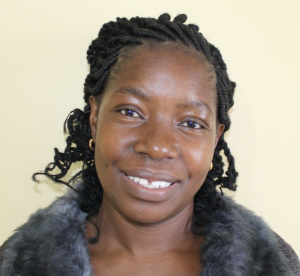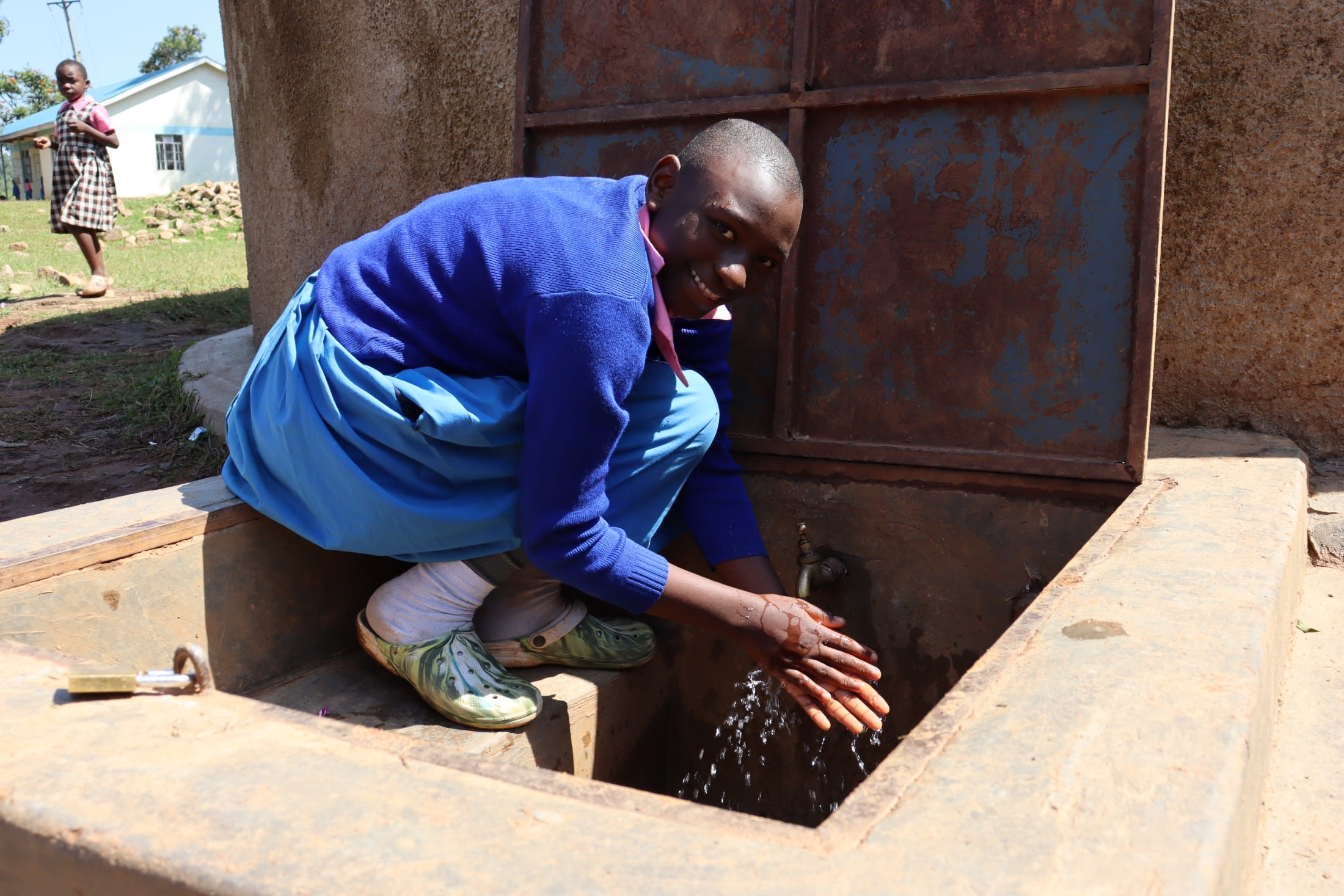"Pupils in our school go through a hard time since they have to go to the spring several times a day to fetch water that is used in school. This has impacted their studies negatively because they don't get enough time to study and they also get tired which minimizes their concentration in class," said Head Teacher Mr. Seth Oyiero, explaining the water crisis where he teaches at Gidimo Primary School.
Gidimo Primary School has 209 students, 13 teachers and staff, and no sources of water on campus. Opened in 1979, both enrollment and the water and sanitation crisis at this school have only increased.
The school currently depends on a spring in the village as their main source of water, which is shared with community members. This means long wait times as community members insist on filling their containers first, leading to students being late and even missing some classes entirely as they try to fetch water every day. In turn, their academic performance suffers, along with the teachers' prep time who are sent to chaperone the students.
Pupils are expected to be in school by 7:00 am. On arrival, they pick up rubbish from the school compound and sweep their classrooms and the administration block. When they are done with cleaning, they rush to the spring to fetch water for use in school before they begin classes at 8:00 am. The path that leads to the spring is steep and slippery. Sometimes pupils fall and hurt themselves going to and from the spring, especially when it has rained.
Students break for lunch at 12:50 pm and after lunch, they have to go fetch more water before they resume afternoon classes at 2:00 pm. Games time starts at 4:00 pm but if it is a Friday, pupils go to the spring one more time to fetch water for thorough cleaning of the classrooms, offices, and latrines. The pupils then leave for home at 5:30 pm.
Though the spring was once protected, it has not been maintained. As a result, the quality of the water is questionable, putting students' and teachers' health at risk. Adding to the school's health challenges is the overwhelming need for improved sanitation and hygiene, often hindered by the lack of water.
"The hygienic condition in our school is very poor because of the lack of sufficient water for cleaning our classes and latrines. Washing our hands after using the toilet is unheard of, yet dirty hands are major transmitters of hygiene-related diseases. The latrines are not sufficient and they are also not up to standards," said 14-year-old student Brenda.
"These challenges have led to a lot of absenteeism from school and some pupils drop out of school entirely, especially when they reach puberty."
What We Can Do:
Rain Tank
A 75,000-liter rainwater catchment tank will help alleviate the water crisis at this school. The school will help collect the needed construction materials such as sand, bricks, rocks, and water for mixing cement. We will complement their materials by providing an expert team of artisans, tools, hardware, and the guttering system. Once finished, this tank will begin catching rainfall that will be used by the school’s students and staff for drinking, handwashing, cooking, cleaning, and much more.
We and the school strongly believe that all of these components will work together to improve standards at this school, which will help lead to better student academic performance and will help to unlock the potential for these students to live better, healthier lives.
Handwashing Stations
There is currently nowhere for students to wash their hands after using the latrines or before eating lunch, let alone the water to do so.
The student health club will oversee the 2 new handwashing stations we will provide, and make sure they are kept clean and in working condition. The club leaders will fill the handwashing stations with water daily and make sure they are always supplied with a cleaning agent such as soap or ash.
VIP Latrines
The boys' latrines are in pathetic condition since they are almost full, dirty, and smelly. 3 of the girls' latrines are missing doors, but since they have no alternative they are forced to use them anyway.
We will construct 2 triple-door latrine blocks using local materials that the school will help gather. 3 doors will serve the girls while the other 3 will serve the boys. All of these new latrines will have cement floors that are designed to be easy to use and to clean. And with a rain tank right on school property, there should be enough water to keep them clean.
Training on Health, Hygiene, COVID-19, and More
We will hold a 1-day intensive training session with students, teachers, and parents. This training will cover a wide range of topics including COVID-19 symptoms, transmission routes, and prevention; personal and environmental hygiene; and the operation and maintenance of the rain tank, latrines, and handwashing stations. There will be a special emphasis on handwashing.
Our team of facilitators will use a variety of methods to train, including participatory hygiene and sanitation transformation, and asset-based community development. We will initiate a student health club, which will prepare students to lead other pupils into healthy habits at school and at home. We will also lead lectures, group discussions, and provide illustrative handouts to teach health topics and ways to promote good hygiene practices within the school including handwashing and water treatment. We will then conduct a series of follow-up trainings before transitioning to our regularly scheduled support visits throughout the year.

 Rainwater Catchment
Rainwater Catchment
 Rehabilitation Project
Rehabilitation Project


















































